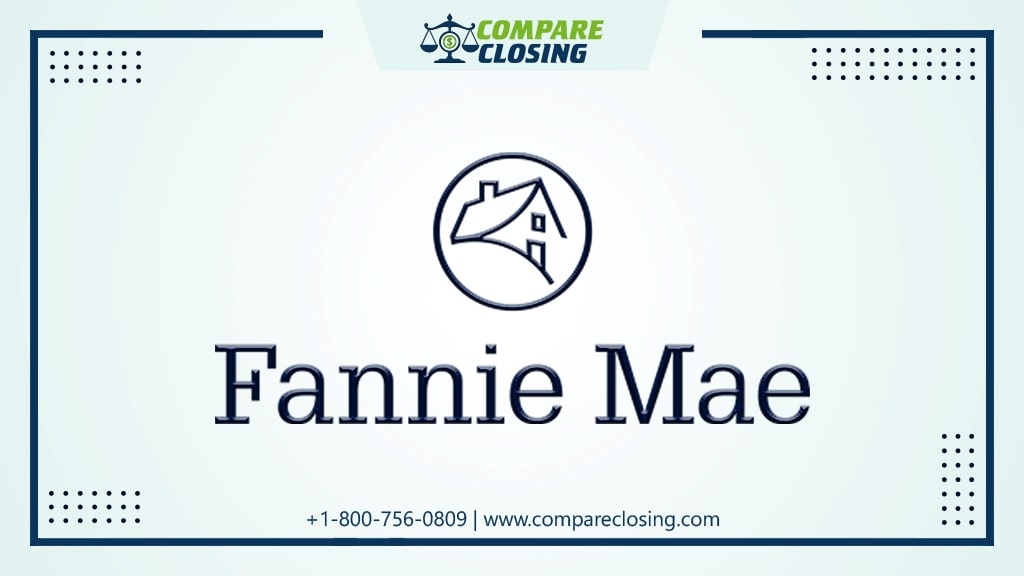Table of Contents
- What Are Netting Escrows & How Does It Work?: The Best Guide - January 2, 2024
- The Secret About Prescriptive Easement: Top Guide 1 Must Know - December 4, 2023
- About Home Equity Loans In Texas And How Can One Obtain It - November 27, 2023
About Fannie Mae
The Federal National Mortgage Association (FNMA) lovingly known as Fannie Mae, is a government-sponsored enterprise (GSE) that was created by Congress to encourage homeownership and provide liquidity to the mortgage market.
During the Great Depression as part of the New Deal, Fannie Mae got established in 1938, with the sole purpose to aid low- to moderate-income borrowers to obtain financing for a home.
What Does Fannie Mae Do?
Fannie Mae is a secondary mortgage market participant, so it does not originate mortgage loans.
Fannie Mae’s job is to keep funds flowing to lenders by purchasing or guaranteeing mortgages issued by banks, credit unions, thrifts, and other financial institutions.
Fannie Mae is one of the two large purchasers of mortgages in the secondary market. Its sibling Freddie Mac is the other purchaser also called the Federal Home Loan Mortgage Corporation, which also is a GSE chartered by Congress.
Fannie Mae, pools mortgages to form mortgage-backed security (MBS) after purchasing them on the secondary market.
The institutions, like investment banks, insurance companies, and pension funds, purchase Fannie Mae’s mortgage-backed securities.
Fannie Mae also has its own portfolio, which is called a retained portfolio, it invests in its own and other institutions’ mortgage-backed securities. A debt called agency debt is issued by Fannie Mae to fund its retained portfolio.
Liquidity is created for lenders by Fannie Mae’s investing in the mortgage market, which in turn allows them to underwrite or fund additional mortgages.
Last year, Fannie Mae provided $1.4 trillion in liquidity to the mortgage market, this helped low-income Americans to buy, refinance, or rent approximately six million homes.
From 1968 Fannie Mae has been publicly trading, it traded on the New York Stock Exchange (NYSE) till 2010.
Fannie Mae was forced to delist its shares for failure to meet the minimum closing price requirement mandated by the NYSE after the Great Recession and the impact it had on the housing market. Now Fannie Mae trades over-the-counter.
Fannie Mae and Freddie Mac were taken over by the government through a conservatorship of the Federal Housing Finance Agency (FHFA) in the second half of 2008.
To keep both agencies debt-free the U.S. Treasury provided $191 billion, which has since been repaid.
The terms governing Fannie Mae’s dividend obligations were changed in August 2012, so that the U.S. Treasury claimed any profits at the end of each quarter and if there is a deficit it provided capital.
The Treasury and FHFA publicized in September 2019, that Fannie Mae and Freddie Mac could begin keeping their earnings to hold up capital reserves of $25 billion and $20 billion, respectively.
This move was progressing toward transitioning the two out of conservatorship.
The Loan Requirements For Fannie Mae
A mortgage lender must comply with the statement on Subprime Lending which has been issued by the federal government if they want to do business with Fannie Mae.
The statement takes care of several risks associated with subprime loans, like the low introductory rates followed by a higher variable rate, limits on how much can the interest rate go up, partial to no borrower income documentation, and product features that make frequent refinancing of the loan possible.
The mortgages which are purchased and guaranteed by Fannie Mae must meet strict criteria.
The limits are set by FHFA. The borrower has to go through an approved lender to obtain a loan that is backed by Fannie Mae.
The lenders must meet eligibility and underwriting criteria along with avoiding subprime loans to ensure the credit quality of the financing.
The Process Of Applying For A Fannie Mae-Backed Mortgage
After finding a lender who is qualified to issue a Fannie Mae-backed loan, the borrower will be guided in filling out a Uniform Residential Loan Application where they will need to gather and provide financial information and documentation.
The documents include a record of employment and the borrower’s gross income and statements, like a W-2 or 1099 form to back these up.
The borrower will also have to provide a total of their monthly debt obligations, like car payments, balances on credit cards, alimony, and child support.
The lenders prefer to follow the 28/36 Rule, which means less than 28% of the household should be spent on monthly income on housing expenses and less than 36% on debt servicing which includes mortgages and car loans.
The maximum debt-to-income (DTI) ratio that Fannie Mae will accept is 36%, and if the borrower meets credit score and reserve requirements then it can be as high as 45%.
If the borrower’s DTI ratio is too high, then they can make a larger down payment so to reduce their monthly costs. Even if a 20% down payment is considered ideal, some borrowers can put as little as 3% down.
A minimum credit requirement is also needed to be met by homebuyers to be eligible for Fannie Mae-backed mortgages.
For a single-family home that will be a primary residence, a FICO score of a minimum of 620 for fixed-rate loans and 640 for adjustable-rate mortgages (ARMs) is required.
When the FICO score is higher, then they are more eligible for the lowest available interest rates.
Fannie Mae HomePath
If there is a foreclosure on mortgages owned or invested by Fannie Mae, or when the properties are acquired through deeds in lieu of foreclosure or forfeiture, Fannie Mae tries to sell the properties in a timely manner to lower the potential impacts on the community.
In this program home, buyers and investors can search and make offers on these properties. HomeReady Mortgage is a reasonable way for creditworthy homebuyers to finance their new homes.
Many times special financing is available which includes closing cost assistance, 3% down payments, and improvement costs all wrapped into the loan.
The local real estate professionals are used by Fannie Mae to prepare, maintain, and list the properties for sale.
Most listings have photographs, property descriptions, and other details, like school and neighborhood information.
Fannie Mae’s RefiNow Program
Fannie Mae has been offering low-income mortgage holders a new refinance option from June 5, 2021, through a program called RefiNow, this program will reduce their monthly payments and interest rates.
To qualify for this program the homeowners must be earning at or below 80% of their area median income (AMI).
This program removes some of the hurdles of the traditional refinancing process and helps homeowners refinance by making homes cheaper, and promoting sustainable homeownership.
If homeowners need to know if Fannie Mae owns their mortgage or not, they need to visit Fannie Mae’s Loan Lookup Tool. Several benefits are offered to the homeowners by the RefiNow program.
The program brings a reduction of a minimum of 50 basis points in the homeowner’s interest rate and saves at least $50 in their monthly mortgage payment.
Secondly, if an appraisal was obtained for the transaction, then Fannie Mae provides a $500 credit to the lender at the time that the loan is purchased and this credit must be passed on to the homeowner by the lender.
A homeowner must meet the following qualifications in order to qualify for RefiNow:
- They must have a mortgage backed by Fannie Mae and it should be secured by a one-unit principal residence.
- They need to have a current income at or below 80% of the AMI.
- They must have never missed a mortgage payment in the past six months and a maximum of one missed mortgage payment in the past 12 months.
- They must have a mortgage where the LTV ratio is up to 97%, the DTI ratio is 65% or less, and a FICO score of at least 620.
Conclusion
A government-sponsored enterprise (GSE) created by Congress is what Fannie Mae is.
Fannie Mae only buys and guarantees mortgages through the secondary mortgage market, it doesn’t originate or give out mortgages to homeowners who are looking for funding.
Fannie Mae creates more liquidity for lenders by investing in mortgages.
Amanda Byford
Amanda Byford has bought and sold many houses in the past fifteen years and is actively managing an income property portfolio consisting of multi-family properties. During the buying and selling of these properties, she has gone through several different mortgage loan transactions. This experience and knowledge have helped her develop an avenue to guide consumers to their best available option by comparing lenders through the Compare Closing business.





